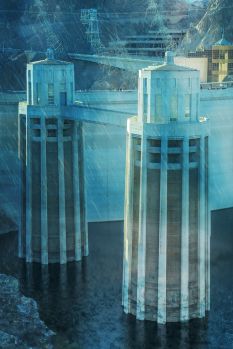Power Generation: Difference between revisions
From ASDSO Dam Safety Toolbox
No edit summary |
No edit summary |
||
| Line 2: | Line 2: | ||
---- | ---- | ||
{{Picture | |||
|image= | |||
<!-- Add image file name --> | |||
PowerGeneration.jpg | |||
|link= | |||
<!--Add link if applicable --> | |||
|caption= | |||
<!-- Add picture caption --> | |||
Hoover Dam Hydropower | |||
}} | |||
Dams can be used to generate power as water passes through the dam. The energy created by the water passing through the dam is captured by a generator and passed onto a nearby power grid. The United States is one of the largest producers of hydropower in the world, second only to Canada. Dams produce between 8 and 12 percent of the nation’s power needs. | Dams can be used to generate power as water passes through the dam. The energy created by the water passing through the dam is captured by a generator and passed onto a nearby power grid. The United States is one of the largest producers of hydropower in the world, second only to Canada. Dams produce between 8 and 12 percent of the nation’s power needs. | ||
Revision as of 18:03, 10 June 2022

|
| Hoover Dam Hydropower |
Dams can be used to generate power as water passes through the dam. The energy created by the water passing through the dam is captured by a generator and passed onto a nearby power grid. The United States is one of the largest producers of hydropower in the world, second only to Canada. Dams produce between 8 and 12 percent of the nation’s power needs.
